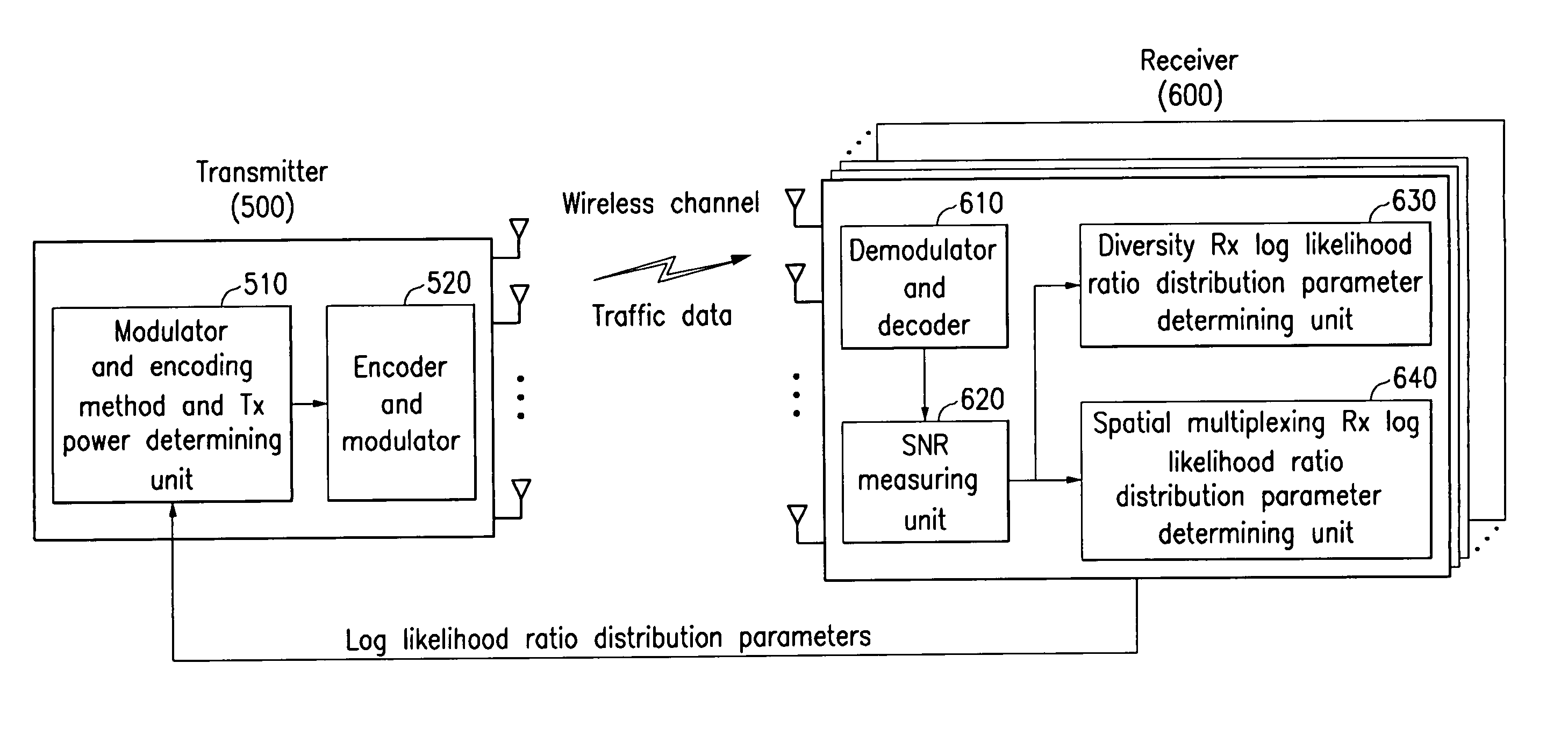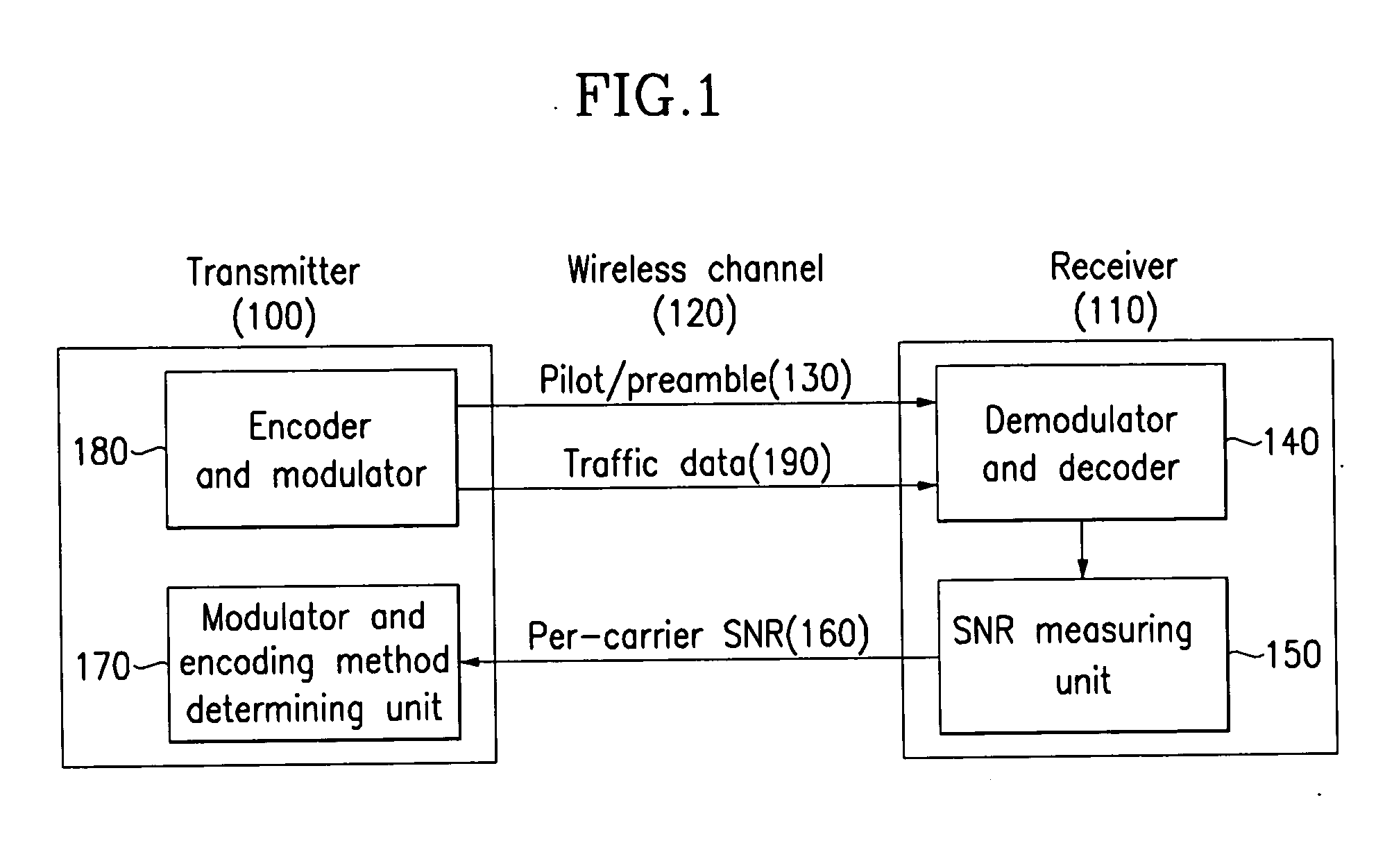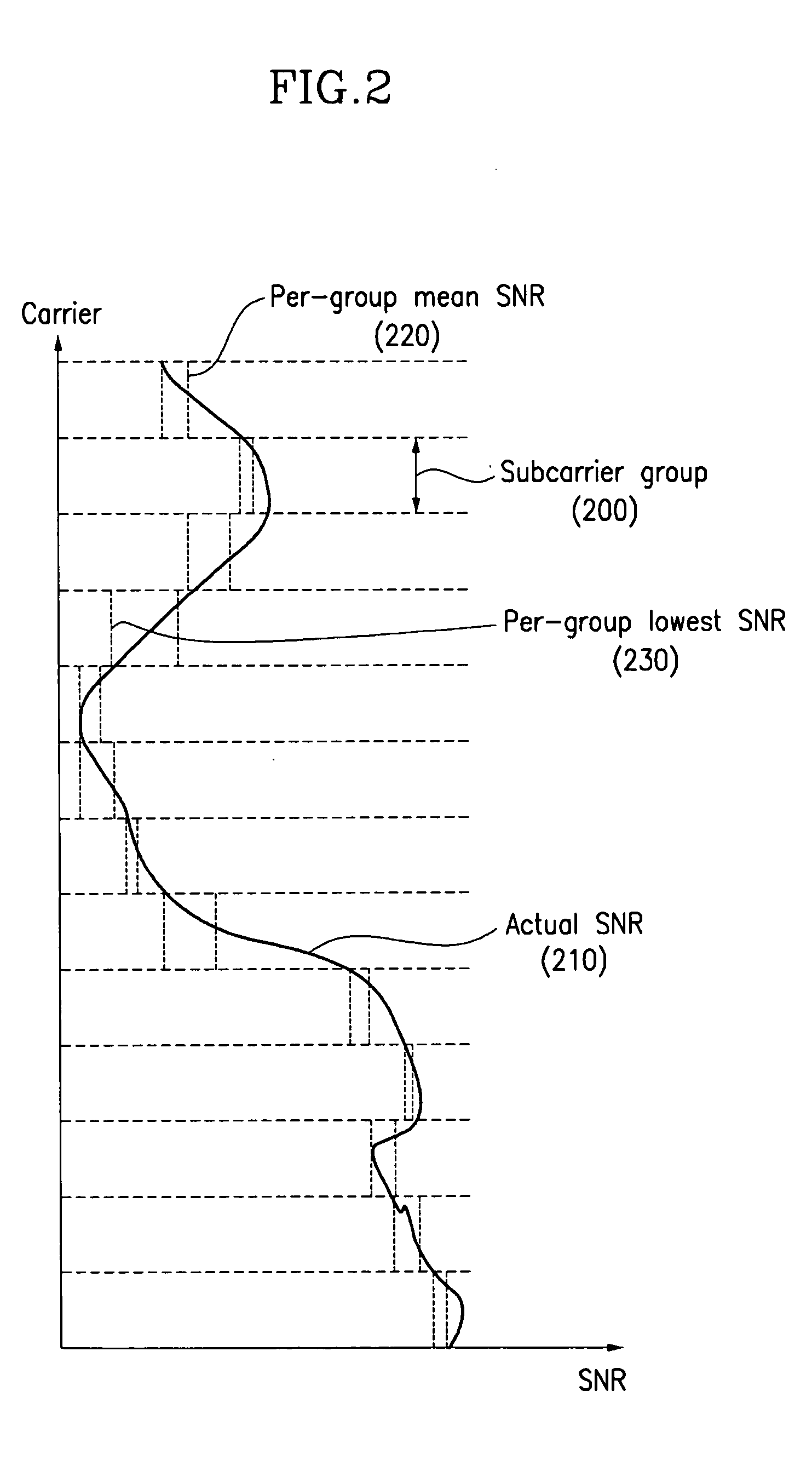Adaptive transmitting and receiving device and method in wireless communication system using frequency division duplexing
a wireless communication system and transmission method technology, applied in the direction of transmission monitoring, power management, orthogonal multiplex, etc., can solve the problems of large feedback information, difficult to apply the conventional method to the actual system, and the inability to use the conventional method, so as to improve the performance of the wireless communication system and increase the capacity
- Summary
- Abstract
- Description
- Claims
- Application Information
AI Technical Summary
Benefits of technology
Problems solved by technology
Method used
Image
Examples
Embodiment Construction
[0034] In the following detailed description, only the preferred embodiment of the invention has been shown and described, simply by way of illustration of the best mode contemplated by the inventor(s) of carrying out the invention. As will be realized, the invention is capable of modification in various obvious respects, all without departing from the invention. Accordingly, the drawings and description are to be regarded as illustrative in nature, and not restrictive.
[0035]FIG. 3 shows an exemplified distribution of received log likelihood ratios in the wireless communication system using general multi-carriers, showing that the normalized standard deviation value is 0.28 in (a), 0.48 in (b), 0.77 in (c), and 0.82 in (d).
[0036] Referring to FIG. 3, distributions of the received log likelihood ratios and distributions approximated with the Gaussian distribution are illustrated when a channel power profile and a delay profile are respectively (0 dB, −1 dB, −9 dB, −10 dB, −15 dB, −...
PUM
 Login to View More
Login to View More Abstract
Description
Claims
Application Information
 Login to View More
Login to View More - R&D
- Intellectual Property
- Life Sciences
- Materials
- Tech Scout
- Unparalleled Data Quality
- Higher Quality Content
- 60% Fewer Hallucinations
Browse by: Latest US Patents, China's latest patents, Technical Efficacy Thesaurus, Application Domain, Technology Topic, Popular Technical Reports.
© 2025 PatSnap. All rights reserved.Legal|Privacy policy|Modern Slavery Act Transparency Statement|Sitemap|About US| Contact US: help@patsnap.com



